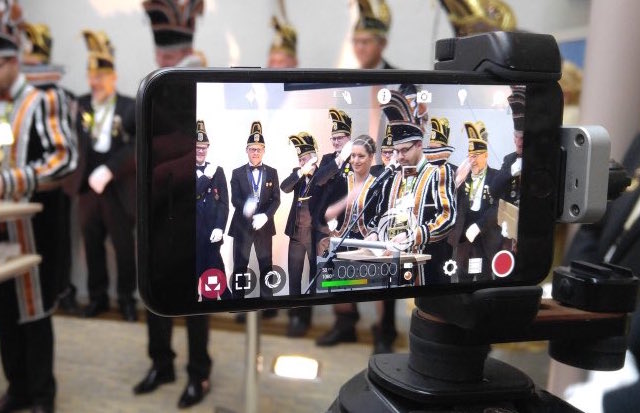Mobile journalism allows reporters to shoot, edit and publish stories right from their phones, a workflow Wytse Vellinga has been honing in his role as a 24/7 mobile journalist at the Dutch regional broadcaster Omrop Fryslân.
He believes the future of journalism is mobile, and produces content for radio, television and online using only the iPhone in his pocket.
We spoke to him about his work as a reporter and digital storytelling trainer to find out some advice for aspiring mobile journalists, and where he thinks the mobile journalism industry is going.
How did you get started in mobile journalism?
"I began telling stories with a Nokia Lumia 1020. It all took off after I recorded a piece for television just using my phone without telling my editor. They were blown away at the quality, and then let me do everything using my phone.
"I then undertook half a day's training with Glen Mulcahy who got me into using iPhones, and from there I started experimenting with every piece of kit you can think of from lenses to lights."

What kit do you use on a day-to-day basis?
"Working with lots of kit didn't make much sense to me, and everything I bought spent a lot of time in my cupboard at home.
"I was aiming to be low key and stay as mobile as possible and I found the less I use the better it was. The tools should never get in the way of the story, so my extra kit just comprises of an EX-630 tripod, an iBlazr 2 clip-on external light and the Rode i-XLR adaptor for a handheld microphone."
What's the benefit for journalists to work with their smartphone?
"With mobile journalism, we can tell smaller, personal stories to help explain the big issues in the mainstream news. We get closer to the audience when we report on bigger stories in a more intimate way.
"Using a phone is very personal – interviewees aren't talking to a TV crew, they are talking to a person, and they aren't intimidated because they have a phone themselves.
"For example, I once told the story of this one guy who drives around in his bright orange 'Ugly Duckling' car picking up plastic to prevent it from going into the ocean. It was related to a very big story, of the environmental dangers that we are facing, but cut down to a personal clip of this one man trying to do his bit for the planet. I couldn't have tagged along with him if I had big kit."
What are the challenges?
"As a mobile journalist, you have to do everything by yourself, and you don't have anyone to discuss the story with in the field. When something doesn't work the way it should, it's up to you to sort it out.
"Editing also takes a lot of time to learn as you'll probably be used to working on big screens. Using just your fingers is the biggest hurdle to cross, but you have to go and play with it. Practise by filming things at home like your children or your dog – you'll find that when you're comfortable with editing on a phone, your workflow will speed up."
What advice would you give to reporters looking get started in mobile journalism?
"Many of the journalists I teach tend to use the free stuff like the native camera on their smartphones, but of course they don't get the results.
"They need to invest in the right kit and use the best apps for filming and editing – at the moment I'd recommend Filmic Pro for shooting, and editing with Luma Fusion for iOS or Kinemaster for Android.
"As mojo is becoming more and more popular, there are a lot of trainers about, but some aren't using these tools themselves, so students get disappointed – which is a big danger for the mojo movement.
"The story is always the most important thing, but I'm constantly surprised how little some journalists know about storytelling. The mojo training is about this now, not so much the technical side."
Tweet could not be found or could not be loaded.
The mobile journalism industry is constantly developing – what is the future of mojo?
"We are at a crossroads in the development of mojo between video you can cheaply produce and publish on your smartphone, or a more traditional way of doing things.
"Many people feel the camera on a smartphone can never be as good as 'professional' kit – they are still nervous even when you show them examples of what can be made.
"I think most mobile journalists would agree that the technical people in news organisations are focused on quality, and trying to convince them is tough, but you will have better, more personal stories with mojo. If journalists are in charge then mojo will win over more traditional workflows, but if technical people are in charge, it won't.
"I would like to see more journalists going out there and getting those small stories, and now they can. The bonus is that there is so much support within the mobile journalism community, and always someone available to help you out."
Free daily newsletter
If you like our news and feature articles, you can sign up to receive our free daily (Mon-Fri) email newsletter (mobile friendly).
Related articles
- New project InOldNews wants to improve representation in video journalism
- 38 mojo apps from BBC trainer Marc Blank-Settle
- 15 online communities for journalists you should know about
- Ukrainian journalists use smartphones to tell stories of displaced communities
- 10 video editing apps for mobile journalists










